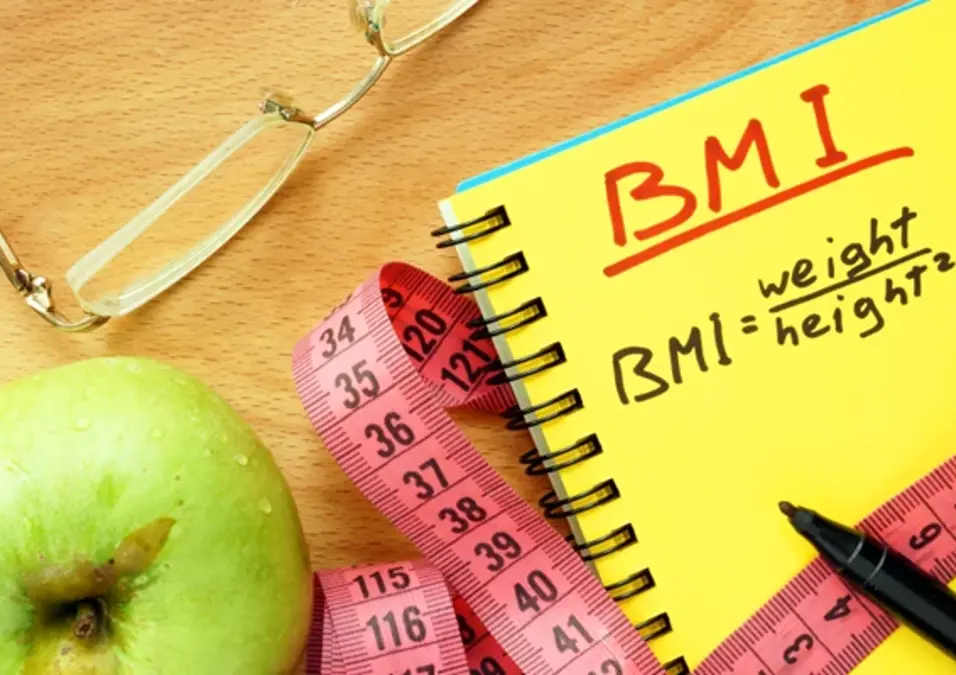Your BMI formula

SIGN UP FOR YOUR FREE DAY PASS TODAY!
The idea of BMI can be found floating around most doctors’ offices and gym floors. You’ve heard about it, you’ve heard it’s a good measure, and you may know roughly what it means for you. But what is it, really, and how do you set and reach goals based on it?
BMI (body mass index) definition
BMI is the body mass index. It is a good indicator of how healthy your weight is, and how much body fat you are holding onto. It’s imperfect, as it doesn’t take into account the increased muscle mass that many people boast, but it works well as a rough rule of thumb.
You can use an online BMI calculator, or a BMI calculator app, to work out yours. It is based on an equation: weight (lb) / [height (in) x height (in)] x 703.
So, you divide your weight (lbs) by your height (inches) squared and then multiply this number by 703.
The final number is your BMI, and it is measured on the following range:
Underweight is a BMI of less than 18.5
Normal weight is a BMI between 18.5 and 24.9
Overweight is a BMI of 25 to 29.9
Obesity is a BMI of 30 or greater
Ideally, therefore, if you have average muscle mass, you will want your BMI to fall between 18.5 and 24.9. Though being underweight is as much a health concern as being overweight, we will be looking at bringing your BMI down, as obesity is one of the fastest-growing issues in the Emirates.
1. Get an accurate BMI reading
As mentioned above, you can either do the maths longhand or use a BMI calculator (this is recommended as it’s easier and generally more foolproof.) This will give you an accurate BMI reading, which is vital for this journey.
Many gyms, including most likely your nearest gym in Dubai, will have scales to do this for you, or you can get your GP to find your BMI if you don’t want to use a calculator.
Then you will know what you’re playing with, and how to adjust your lifestyle accordingly. This brings us to point 2…
2. Set a realistic BMI goal
Of course, this, and step 1, both apply for gaining and losing weight. Either way, if your BMI falls outside of the healthy range, you will want to set a manageable target as close to a healthy range as possible. If your BMI is 16, try setting a goal of hitting 18 within a couple of months. If it’s 34, aim for 30 within six months, then rethink and ask yourself when you want to get down to, say, 26.
Also try using other measures, such as body fat analysis, to work out an appropriate goal. This is something a doctor or personal trainer will be able to help you with. It may be that your healthy range is 28-32 (mine is, as a heavyset athlete, for example.)
3. Use the scales: they are your best friend
Don’t just make a goal and hope for the best. Realtime feedback is vital. Weigh yourself once per week. Try to do so on the same day, at the same time, so as to limit as many variables as possible. Hopefully, your weight will be going in the right direction.
Your local gym will have scales if you don’t have any.
Use a BMI calculator each time to see where you are. If you’re not heading towards your goal, try rethinking your diet and exercise regime.
4. Move a little more
If you’re trying to lose weight, you need to hit a caloric deficit. This can be achieved in part by exercise (though, of course, as you build muscle, your healthy target BMI range may raise.) Whatever style of exercise motivates you, get out, and do it.
If you’re trying to gain weight, go for resistance training. A high-calorie diet combined with resistance training like weight lifting, swimming, or yoga can help your body to recover from undernourishment and pack on those much-needed pounds.
5. Eat what you need
If you want to lose weight, as mentioned above, you need a caloric deficit. This means eating fewer calories than maintenance- try going for 500 calories fewer than you usually eat and see where it gets you. This is a fairly straightforward way to bring your BMI down, though it may be a good idea to consult a doctor or ask around at the nearest gym to find out a little more.
If you’re trying to put weight on, eat more. Take a mix of high-calorie junk food and good quality real, whole food.














































































